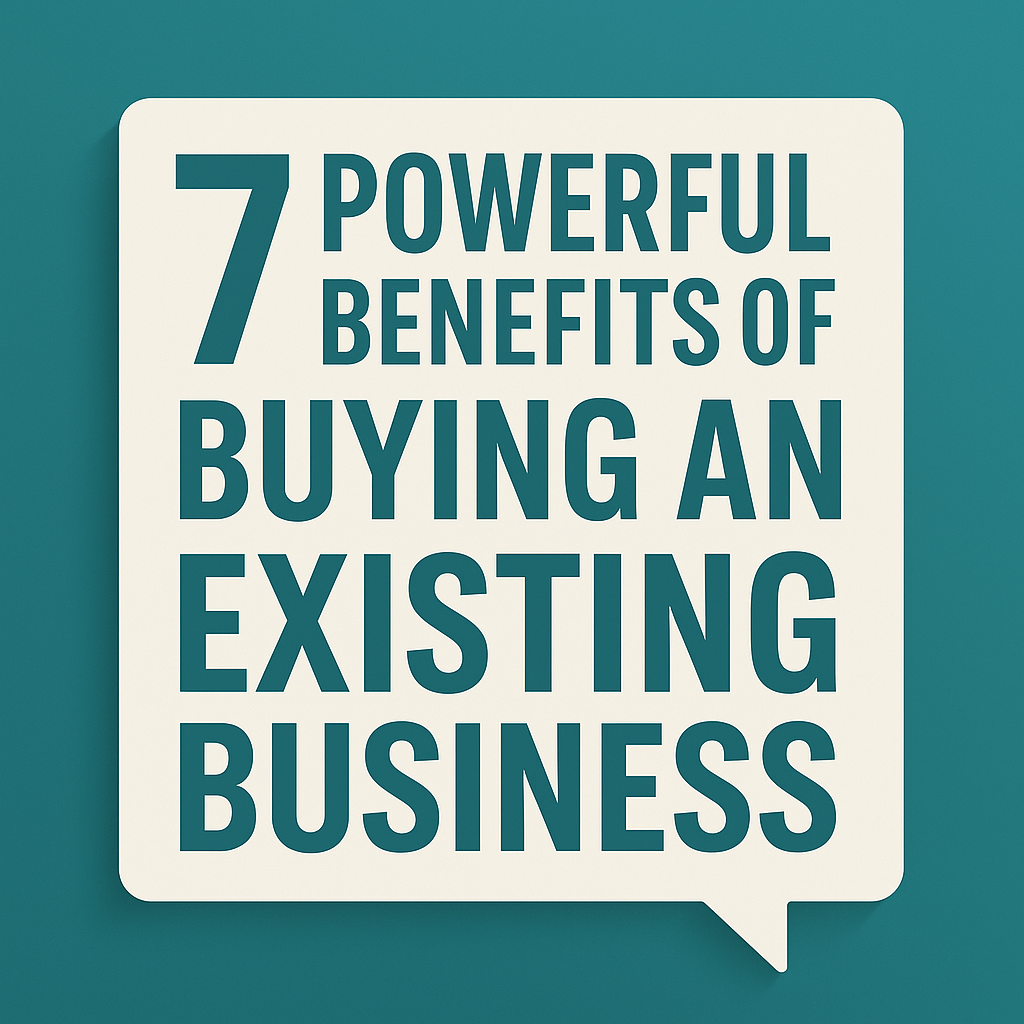Posts Tagged ‘M&A’
The Moment You Think About Selling: What Every Owner Needs to Know
Selling a business is like saying goodbye to a dream that has filled your waking hours and peppered your sleep with anticipation and planning. It’s the emotional rollercoaster of turning a chapter, mingling the excitement of new beginnings for both the seller and the buyer, with the bitter-sweetness of parting ways. It often feels overwhelming, yet essential. And yet, it’s a process that many business owners embark on without a clear road map, which is why the role of a business advisor becomes indispensable. I’d like to share why having an expert by your side can be the difference between a successful sale and a missed opportunity.
Imagine stepping into uncharted territories. That’s exactly what the selling process can feel like without a business advisor. These professionals are like seasoned navigators who ensure you stay on the right path, ultimately leading you to your destination. One major problem many business owners face is accurately valuating their business. It’s often hard to see past the personal bias and emotional attachment to assess what a potential buyer might value. Business advisors step in with their analytical lens, conducting financial analyses, recasting financial statements, and setting a fair market value. They highlight and address any operational weaknesses that might detract from the business’s worth. This pre-sale preparation is a critical advantage that can dramatically enhance your selling potential.
Another important aspect is marketing your business and screening potential buyers. Let’s be honest, you wouldn’t want to sell your beloved business to just anyone, right? Business advisors curate marketing campaigns targeting relevant networks and platforms specific to the industry. It’s about finding right-fit buyers who understand and align with your established business goals. Advisors ensure that only financially qualified buyers, with the genuine intent and capability, are brought forward. This meticulous vetting process saves both time and effort, which are invaluable in business dealings.
Now, onto the exciting yet nerve-wracking part of deal structuring and negotiation. This is where having an expert is truly a game-changer. Advisors help navigate the stormy seas of offer evaluation, price adjustments, and term negotiations. They ensure that your interests are safeguarded, often yielding better closure rates than the industry standard. How’s this for a fact: while the average closure rate for selling businesses ranges from 4-25%, professional advisors have successfully achieved an impressive 54% closure rate. That’s more than double, and it speaks to the mastery and strategic insights they offer.
Lastly, one cannot overlook the importance of closing and transitioning smoothly. As the seller, you want the assurance that when you hand over the keys, the new owner has everything they need to continue your legacy seamlessly. Advisors play a pivotal role during this phase by managing due diligence, finalizing agreements, and ensuring any training or transition period facilitates a smooth handover.
The expert advisors at places like Sunbelt leverage extensive networks far and wide, crafting strategies that dramatically enhance sale timelines and net proceeds. They’re not just selling a business; they’re ensuring you receive the rewarding culmination of your entrepreneurial journey.
Whether you’re in the realm of selling your business soon or strategically planning for future growth, don’t go it alone. Visit us at [Thrive Point Advisors](https://thrivepointadvisors.com/) and arm yourself with the strategic expertise needed to succeed. Let’s take your business dreams to the next level, together.
Read More“Why Buying an Existing Business Is Smarter Than Starting from Scratch”
## Benefits of Buying an Existing Business
Buying an existing business offers several advantages that can significantly enhance your entrepreneurial journey. Here are some of the key benefits:
### Advantages of Buying an Existing Business
1. **Existing Cash Flow**:
– An existing business typically generates immediate revenue, providing cash flow from day one. This is crucial as it allows for quicker returns on investment compared to starting a new business[2][3].
2. **Established Brand and Customer Base**:
– The business comes with a well-established brand and an existing customer base, saving time and resources that would otherwise be spent on building brand awareness and generating leads[1][2].
3. **Proven Business Model and Operational Processes**:
– Established businesses often have refined workflows and operational processes, minimizing the trial-and-error phase and allowing for immediate focus on scaling[2].
4. **Trained and Experienced Staff**:
– An existing business typically includes a trained, experienced team, ensuring continuity and operational efficiency during the transition period[1][2].
5. **Access to Financing**:
– It is generally easier to finance an existing business compared to a startup because it has a proven track record and existing assets that can be used as collateral[1][3].
6. **Lower Risk**:
– Buying an existing business is often less risky than starting from scratch, as there is historical performance data providing insight into the business’s strengths and profitability[2][8].
7. **Faster Growth Potential**:
– With an established foundation, there is potential for faster growth by improving existing processes or expanding the market[2][3].
“Main Street vs. Middle Market: Why Deals Close Faster”
# Main Street Deals vs. Middle Market Deals: Why Speed Matters
Main Street deals typically close faster than Middle Market transactions due to several distinct factors that differentiate these two business environments. Here’s a summary of the key differences and reasons why Main Street deals expedite:
## Main Street Business Deals
– **Simpllicity and Lower Risk Perception by Buyers**: These deals often involve smaller, owner-operated businesses with less complex structures. Financing is typically straightforward, often relying on seller financing or a few primary sources. Documentation is simpler, using basic financial statements like QuickBooks reports[1][4].
– **Marketing Strategy**: Businesses are marketed broadly to a wide audience, increasing visibility and potential quick turnaround[1][7].
– **Buyer Profile**: Main Street buyers are usually individuals seeking income replacement, not large institutions[7].
## Middle Market Business Deals
– **Complexity and Institutional Involvement**: Middle Market deals involve larger, more sophisticated companies with intricate deal structures. These businesses often require earn-outs, standby agreements, and more complex financial arrangements, necessitating experienced advisors[1][4].
– **Documentation and Financial Reports**: Audited or CPA-reviewed financial statements are typically required, adding to the complexity and time needed to close a deal[1].
– **Marketing Strategy**: Transactions are highly targeted, focusing on specific acquirers and often involving strategic discussions, which can prolong the process[1][7].
## Why Main Street Deals Close Faster
The simplicity in structure, documentation, and financing options, combined with the broad marketing approach, facilitate quicker closures for Main Street businesses compared to the intricate and targeted processes of Middle Market transactions[1][4][6].
Read More“Navigating the Earnout Game: How to Win in M&A Deals”
### **What is an Earnout and How to Structure One That Works**
An earnout is a performance-based bonus paid out over time, typically after the sale of a business. It is a contractual arrangement where a portion or all of the purchase price is contingent upon the target company achieving certain performance milestones. This structure is commonly used in M&A transactions to bridge valuation gaps, manage risk, and motivate sellers to ensure a smooth transition[2].
#### Key Elements to Consider When Structuring an Earnout
1. **Total Purchase Price**:
– The total amount to be received by the seller, which can be set equal to the seller’s ask or at 70% to 80% of the seller’s ask[1].
2. **Up-Front Payment**:
– A portion of the purchase price paid upfront, reducing the contingent portion.
3. **Contingent Payment**:
– The portion of the purchase price tied to performance milestones, such as revenue growth, customer retention, or EBITDA.
4. **Earnout Period**:
– The duration for which the earnings are measured, typically ranging from one to three years.
5. **Performance Metrics**:
– Specific targets that must be achieved, such as revenue growth or customer acquisition metrics[2].
6. **Measurement and Payment Methodology**:
– How earnings are calculated and paid, including the frequency of payments and corresponding payment triggers[2].
7. **Target/Threshold and Contingent Payment Formula**:
– The formula defining the earnout payment structure, including any thresholds or multipliers[1][2].
#### Types of Earnouts
1. **Performance-Based Earnouts**:
– Incentivize the seller to achieve specific performance targets post-acquisition, such as revenue growth or adjusted EBITDA[4].
2. **Milestone-Based Earnouts**:
– Contingent on the achievement of specific predefined milestones, such as product launches or regulatory approvals[4].
3. **Profit-Based Earnouts**:
– Focus on financial performance metrics like EBITDA, serving as a protective measure for buyers against potential overpayments[4].
#### Benefits of Earnouts
– **Valuation Flexibility**: Earnouts help close valuation gaps by adjusting payments to actual performance[4].
– **Risk Mitigation**: By linking payments to performance, buyers can reduce risk associated with high valuations in uncertain markets[4].
– **Enhanced Seller Commitment**: Sellers have a vested interest in the company’s success, as their earnings depend on meeting specific targets[4].
– **Improved Negotiations**: Earnouts provide a structured framework for contingent payments, benefiting both parties[4].
– **Increased Alignment**: An earnout structure creates a win-win scenario where financial interests of both the buyer and seller align[4].
“SBA Loan Process Explained: Timeline, Tips, and How to Apply”
### **SBA Loan Timeline and How to Apply: A Comprehensive Guide**
The Small Business Administration (SBA) loan process typically takes 60 to 90 days from application to funding, though the exact timeframe can vary based on the lender and loan size. Here’s a detailed overview of the process and steps to apply:
#### **What is an SBA 7(a) Loan?**
– **Loan Details:**
– **Amount:** Up to $5 million
– **Interest Rates:** Competitive and generally lower than other small business loans
– **Repayment Terms:** 10 to 25 years (depending on the loan purpose)
– **Approved Uses:** Working capital, real estate, equipment purchases, debt refinancing, and more
#### **Key Steps in the SBA Loan Process**
1. **Gather Documentation:**
– **Required Documents:**
– Personal & business tax returns
– Personal financial statements
– Profit and loss statement
– Balance sheet
– Debt schedule
– Entity formation documents
– Lease agreement (if applicable)
– Collateral details (if required)
– Some lenders might also require a business plan.
2. **Determine Eligibility:**
– Confirm that you meet both SBA and lender-specific requirements to avoid investing time in an unqualified application.
3. **Connect with an SBA Loan Lender:**
– Finding the right lender is crucial. Some banks have stricter requirements or longer processing times than others.
4. **Applying for SBA Loans:**
– At SmartBiz, the application process typically starts with pre-qualifying in five minutes using an online system.
– This helps avoid unnecessary delays by ensuring relevant documentation is requested.
– Once approved, funds can be deposited into your bank account in as few as seven days[1][3].
#### **Timeline Breakdown**
1. **Application and Underwriting:**
– Gathering and submitting necessary documents can take up to 30 days.
– Underwriting typically takes 10 to 14 days.
2. **Loan Approval and Commitment:**
– Approval and commitment letters are issued in approximately 10 to 21 days.
3. **Closing and Funding:**
– The loan closing and funding process usually takes seven to 14 days[1].
#### **Tips for a Smooth Application Process**
– **Preparation:** Gathering all required documents in advance helps streamline the application process.
– **Financial Health:** Ensure your credit score is good, as it is a key factor in determining eligibility.
– **Documentation Organization:** Neatly organize your financial records to clearly illustrate your business’s financial stability to lenders[4].
By understanding the process and being well-prepared, you can navigate the SBA loan application more efficiently and increase your chances of securing the necessary funding for your business.
Read More5 Profitable Small Business Ideas to Launch in 2025: Emerging Trends & Opportunities
### 55 Small Business Ideas for 2025
Thinking of starting a business in 2025? To help kick-start your dream, here are 55 small business ideas to consider. Each idea aims to address a genuine market need, provide a unique value proposition, and have the potential to be profitable. Here’s a breakdown of the diverse and promising business opportunities:
#### Types of Business Ideas
1. **Food and Retail Ideas**
– Bakery
– Bookstore
– Coffee shop
– Consignment store
– Eco-friendly clothing boutique
– Liquor store
– Sober (alcohol-free) cocktail lounge
2. **Home-Based Businesses**
– Tutoring services
– Real estate agent
– Hauling business
– Digital marketing consultant
– Tour guides
– Green business consultant
– Personal trainer
– Window blind cleaning service
– Online business manager
– Fashion designer
3. **Service-Based Businesses**
– Local delivery services
– YouTube content creator
– Search engine optimization (SEO)
– Freelance writer
– Equipment rental service
– Food truck
– Ice cream truck
– Meal prep company
– Mobile food carts
– Catering
– Mobile locksmith services
– Telephone answering service
– Mobile pet grooming business
– Candle maker
– Security company
4. **Online Businesses**
– Virtual call center operator
– Affiliate marketing
– Virtual assistant services
– Digital marketing campaign manager
– Niche website owner
– SEO expert
– Interior decorator
– Career coaching business
– Sell beard care products online
– Start an online clothing boutique
– Any consulting business
– WordPress themes
– Online course creator
– Mobile app development
– Custom drone builder
– VR/AR app developer
– 3D printing services
– Web developer
– SaaS business owner
– Electronic repair business
– Indexing
– Freelance writing
– Self-publishing
– Blogging
– Audio or video transcription
– Medical transcription
– Meeting transcription
– Business plan writer
– Sell handmade goods online
– Podcasting
– Image consultant
– YouTube stardom
– Data analyst consulting
– E-magazine
– Social media management
– Graphic design artist
– Career coaching
– Sell print-on-demand t-shirt designs
– Sell poster designs
– Sell greeting cards
– Sell handmade jewelry
– Public relations
– Music lessons
– Freelance musician
– Nutritionist
– Design and sell gift baskets
– Clothing boutique
– Language teacher
– Online teaching
– Tutor
– Financial planner
– Online bookkeeping
– Business incubator
– Accountant
– Notary
– Property management company
– Tax prep
#### Key Considerations
1. **Market Need**: Successful businesses address everyday problems or needs.
2. **Unique Value Proposition**: Each idea should offer something unique that differentiates it from competitors.
3. **Profitability**: Potential to generate income over time.
4. **Scalability**: Must be able to grow effectively.
5. **Adaptability**: Must be able to adapt to market dynamics and changes in the economy.
By carefully evaluating these factors and considering which business ideas best align with your skills and resources, you can choose a venture that has a strong potential for success in 2025.
Read MoreHow To Qualify For An SBA Loan In 2025
### **SBA Loan Requirements: How To Qualify**
Shopify outlines the key requirements to qualify for SBA loans in their latest blog post as of 2024. Here is a summary of the main points:
**1. For-Profit Operation:**
– Requires the business to be a for-profit entity. Exceptions are made for for-profit subsidiaries of non-profit organizations.
**2. US-Based Business:**
– The business must operate and be physically located in the US, including US states and territories.
– The business must be majority-owned by US citizens or lawful permanent residents.
**3. Credit Score Minimums:**
– Personal credit scores of 640 or higher are often required. Some lenders may have higher requirements, such as 690 or more.
– SBA 7(a) small loans require a minimum FICO Small Business Scoring Service (SBSS) score of 155.
**4. Owner’s Invested Equity:**
– While the SBA has loosened equity requirements, for example, loan amounts above $500,000 generally require a 10% equity injection from the owner.
– Lenders may have their own requirements that differ from these standards.
**5. Specific Requirements by Loan Type:**
– **SBA 7(a) Loans:**
– Loan sizes range from $500,001 to $5 million.
– Typically require a personal credit score of around 640 or higher.
– A 10% down payment is often required.
– Funds can be used for various purposes, including working capital, real estate acquisition, and debt refinancing.
– Smaller 7(a) loans ($500,000 or less) may not require collateral, but certain lenders might still require it.
**6. SBA Loan Eligibility FAQ:**
– SBA loans typically require a thorough application process with stricter review processes, as they offer more favorable terms.
– The easiest SBA loan to get approved for is the SBA Express loan, which has less stringent requirements but lower maximum guarantees.
For detailed information and specific requirements tailored to different loan types, consult the Shopify blog on SBA loan requirements[1].
Read MoreTop SBA Lenders of 2024: Who’s Leading Small Business Financing?
**Top SBA Lenders Making Waves in Small Business Financing**
In 2024, the SBA lending landscape saw significant shifts and notable movers, shaping the future of small business financing. Here’s a summary of the main movers and shakers:
1. **Live Oak Bank**:
– **Steady Dominance**: Live Oak Bank maintained its top spot by consistently providing high loan volumes, with $1.58 billion in SBA 7(a) loans in 2024.
– **Market Share**: The bank’s strong market share is attributed to its ability to serve diverse industries and its high loan volume, making it a reliable lender for small businesses[4].
2. **Huntington Bank**:
– **Significant Growth**: Huntington Bank significantly increased its market share over the past four years, focusing on small businesses with an average loan size of $246,000 in 2024[4].
– **Competitive Edge**: The bank’s aggressive lending strategy and competitive offerings have positioned it as a top contender in the SBA lending market.
3. **Readycap Lending, LLC**:
– **Rapid Ascent**: Readycap Lending, LLC climbed into the top 3 in 2024, demonstrating adaptability in serving diverse industries and ascending the ranks of SBA lenders[4].
– **Innovative Approach**: This non-traditional lender’s success indicates a growing role for fintech and alternative lenders in SBA financing.
4. **Newtek Bank**:
– **Consistent Performance**: Despite fluctuations in ranking, Newtek Bank remained a top player by maintaining a strong focus on small business lending[4].
– **Reliability**: The bank’s steady performance reflects its commitment to providing reliable financial services to small business owners.
5. **U.S. Bank**:
– **Shift in Strategy**: U.S. Bank shifted its focus towards smaller loans, maintaining a robust loan count though total volume saw minor fluctuations[4].
– **Market Evolution**: This strategic shift reflects the trend of lenders prioritizing higher loan volume with smaller loan amounts to cater to a broader range of small businesses.
6. **Lendistry’s Rise**:
– **Breakout Success**: Lendistry surged from #87 in 2023 to #20 in 2024, marking a significant rise in the market[4].
– **Fintech Influence**: Lendistry’s rapid ascent signifies the increasing impact of fintech and alternative lenders in the SBA financing sector, offering more accessible and competitive loan options to small businesses.
Buying a Business in 2025? Key Financing Options You Need to Know
**Navigating Small Business Financing Opportunities in 2025: Key Insights for Buying a Business**
Buying a small business can be a lucrative opportunity, but navigating the financing process is crucial for success. Here are the key insights from the article:
– **SBA Loan Programs**: The U.S. Small Business Administration (SBA) offers various loan programs, including the Section 7(a) program, which provides financing options for purchasing assets or acquiring an existing business. These loans are federally backed, offering competitive interest rates and easier approval processes. However, they typically require good credit and a 10% to 20% down payment[2].
– **Multi-Financing Strategies**: Buyers often use a combination of financing methods, such as SBA loans, seller’s notes, and other bank financing. Personal guarantees may be required for some loans, meaning business owners could need to put personal assets like their residence as collateral[2].
– **Importance of Planning**: A long-term plan for the business is essential when buying one. Buyers should consider their exit strategy, growth plans, and what they aim to achieve from the acquisition. Passion is important, but a well-thought-out strategy is more critical for the business’s success[2].
– **Preparation is Key**: To secure an SBA loan or any other financing, it’s essential to prepare thoroughly. This includes reviewing SBA criteria, gathering comprehensive business plans, financial statements, and personal financial documents, and selecting an SBA-approved lender[3].
By understanding these financing opportunities and planning strategically, small business buyers can increase their chances of success in the competitive market.
Read MoreNew SBA Recertification Rules: Key Changes for Government Contractors in 2025
**SBA’s Proposed Rule on Size and Status Recertifications Brings Uniformity and Change to Government Contracting Landscape**
The Small Business Administration (SBA) has proposed a new regulation aimed at simplifying and standardizing the recertification processes for small businesses and their socioeconomic status under various programs such as the 8(a) Business Development Program, HUBZone, women-owned small businesses (WOSB), and service-disabled veteran-owned small businesses (SDVOSB) [1].
### Key Changes:
1. **Unified Recertification Standards**:
– The SBA seeks to consolidate size and status recertification standards across all small business programs into one regulation, 13 C.F.R. § 125.12 [1][3].
2. **Recertification Requirements**:
– Contractors are required to recertify their size and small business program status within 30 days of a merger, acquisition, or sale of or by the concern or an affiliate that results in a change in controlling interest [1][3][5].
3. **Impact on Eligibility**:
– If a business is found to be “other than small” or no longer meets the applicable socioeconomic status, it will be ineligible to submit offers for set-aside contracts after the triggering event occurs [1][3][5].
4. **Timeline for Recertification**:
– Long-term contracts require a size and status recertification within 120 days of the end of the fifth year of the contract. Contracting officers, however, can request recertification outside of this window if deemed necessary [1].
### Implementation Details:
– The proposed rule aims to address the widespread confusion and frustration over the current piecemeal regulations and case law.
– The regulation may introduce more uniformity but also has the potential to create more issues for small businesses [1].
### Effective Dates:
– The proposed rule was published in August 2024, and a final rule was issued subsequently with some changes effective January 16, 2025, with certain aspects of the recertification rule having a one-year grace period [3][5].
The SBA’s new regulation seeks to streamline and standardize the recertification process, potentially simplifying compliance for small businesses while ensuring that the eligibility criteria for participating in various programs are clear and consistent.
Read More









